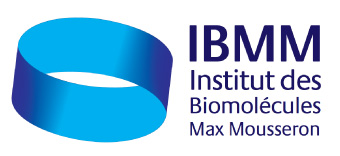Mechanochemistry opens the door to cleaner, safer and more exciting chemistry via simplicity and minimalistic design
Séminaire Chimie IBMM
Dr. Tomislav
Le Mardi 14 Mai 2019 à 10h
ENSCM, Amphithéâtre Godechot (campus Balard, 240 av. Émile-Jeanbrau)
Date de début : 2019-05-14 10:00:00
Date de fin : 2019-05-14 11:30:00
Lieu : ENSCM amphi Godechot (campus Balard, 240 av E. Jeanbrau)
Intervenant : Dr. Tomislav
(Department of Chemistry, McGill University, Montréal, Canada
Chemistry and chemical manufacturing are often associated with pollution and environmental impact, leading to a tainted view of the many benefits that chemical sciences have provided to the society. The need to resolve this conundrum has inspired Green Chemistry, a discipline dedicated to the development of new, cleaner and safer approaches to chemical synthesis.[1]
Many of the goals of Green Chemistry can be achieved by re-considering and simplification of chemical reaction designs and strategies. In particular, the emergence of mechanochemical techniques, i.e. transformations induced and sustained by mechanical action in the solid state, has provided a path to reduce or even completely eliminate solvent use.[2] Solvents have been in use for centuries, continuing a practice employed by alchemists, but are also the principal component of over 40 million tons of toxic chemical waste globally produced each year. In contrast, whereas solid-state and solvent-free transformations have been known for millenia, they were largely ignored by modern chemists.[3]
The re-discovery of the solid state as a reaction medium, and introduction of low-solvent, low-energy reaction techniques such as mechanochemistry or accelerated aging,[2,4] provides for the first time an opportunity to create viable, general alternatives to solution chemistry that can not only reduce the environmental impact of synthesis, but also provide a door to previously not known chemical transformations and difficult or even impossible to reach materials and molecules.
References
1. C.J. Li, Green Chem. 2016, 18, 1836.
2. J.-L. Do, T. Friščić, ACS Centr. Sci. 2017, 3, 13.
3. E.R. Caley, J.F. Richards, “Theophrastus, On Stones, Introduction, Greek text, English translation and Commentary”, Ohio State University, Columbus (1956).
4. C. Mottillo, Molecules 2017, 22, 144.
Contact local IBMM : Dr. Thomas-Xavier

